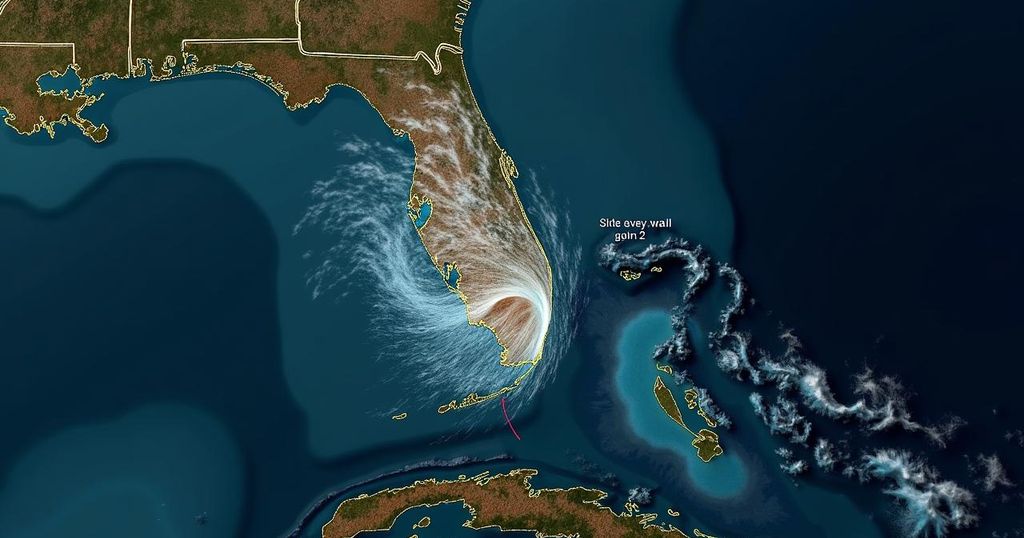Hurricane Helene’s Impact: Devastation Across Florida and Beyond

Hurricane Helene, a Category 4 storm, made landfall in Florida’s Big Bend region, causing severe flooding and power outages across several states. With 22 reported fatalities and over 4.5 million residents losing power, the storm weakened to a tropical storm as it moved inland. Evacuations were ordered in Tennessee and North Carolina due to dam failures, prompting ongoing recovery efforts as damages are assessed.
Hurricane Helene struck Florida’s Big Bend region on Thursday evening as a formidable Category 4 storm, resulting in extensive destruction, including widespread flooding and power outages affecting millions of residents across multiple states. The storm’s arrival at approximately 11:10 p.m. ET with winds recorded at 140 mph marks it as the first Category 4 hurricane to impact the Big Bend area since 1851. As Helene advanced into Georgia and the Carolinas, it caused significant disruptions, with over 4.5 million individuals across states such as Tennessee and Virginia facing power outages and reports indicating at least 22 fatalities attributed to the storm’s impact. The National Hurricane Center stated that Hurricane Helene weakened as it moved inland and was classified as a tropical storm with sustained winds of 45 mph by 11 a.m. ET on Friday, positioned approximately 30 miles southwest of Bryson City, North Carolina, and 105 miles north-northeast of Atlanta. The effects of the heavy rains prompted the evacuation of residents in Newport, Tennessee, following the failure of the Waterview Dam. Furthermore, additional evacuations were mandated in Cocke County due to rising waters affecting the Pigeon and French Broad rivers. North Carolina is also experiencing considerable flooding, leading to warnings of potential failures at the Lake Lure Dam. Helene’s classification as a Category 4 hurricane positions it within a historical context, as it is the 22nd such storm recorded in the United States since 1920. Comparatively, there have only been four Category 5 hurricanes during the same period. Damage assessments from such storms typically indicate that costs can reach billions of dollars due to flooding, structural damage, and prolonged power outages. As officials and residents begin to gauge the storm’s impact, the focus remains on recovery efforts amid ongoing assessments of the damages incurred by Hurricane Helene.
Hurricanes are classified by their wind speeds on the Saffir-Simpson Hurricane Wind Scale, with Category 4 storms characterized by sustained winds of 130 to 156 mph, capable of causing catastrophic damage. The Big Bend region of Florida, historically susceptible to hurricane impacts, was notably affected by Helene. The event has triggered evacuations and emergency responses in several states, underscoring the significant risks associated with such powerful storms. The frequency of strong hurricanes has raised concerns around infrastructure resilience and preparedness measures, especially in light of past damages that can reach billions of dollars.
In summary, Hurricane Helene has demonstrated formidable destructive capabilities as it traversed Florida and beyond, resulting in loss of life, extensive power outages, and widespread flooding. The severity of the storm necessitates urgent recovery efforts and highlights the historical significance of such powerful storms on regional infrastructure and safety. Continued monitoring and evaluation of the storm’s aftermath will be crucial for effective disaster response and community support.
Original Source: www.usatoday.com






